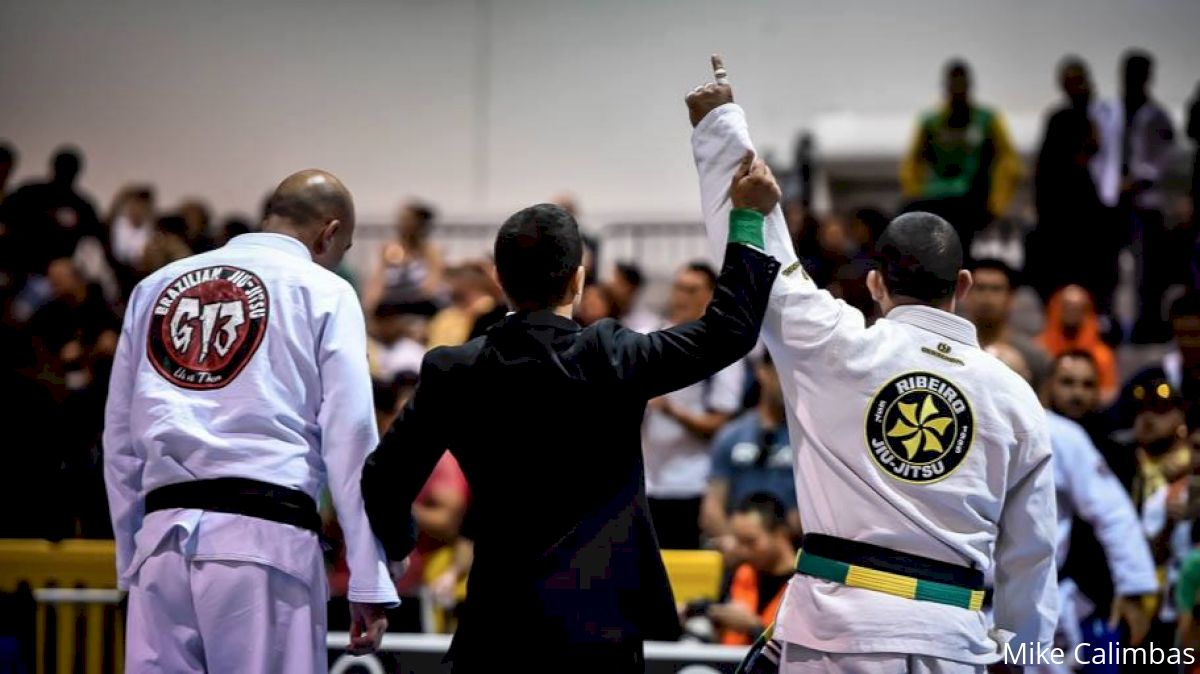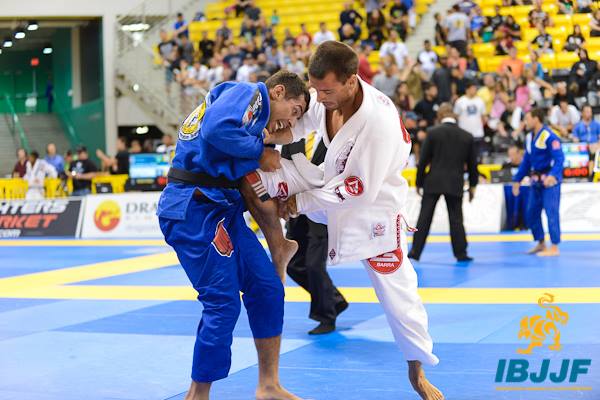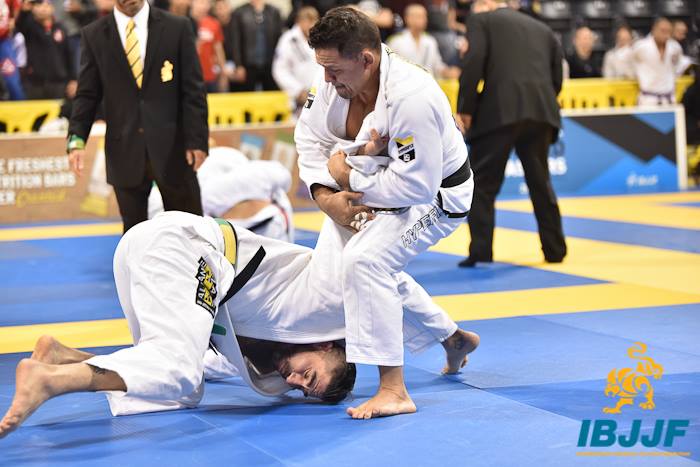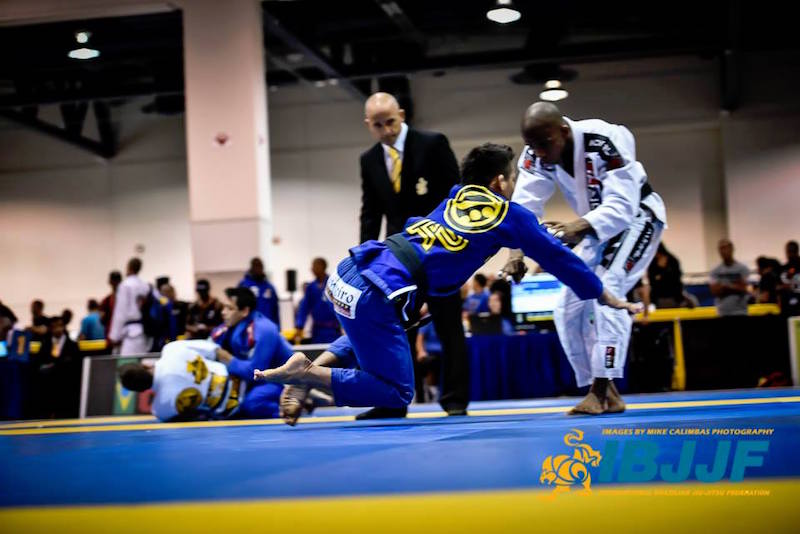A Question Of Age: An Over 30's Perspective On Adult vs Masters Divisions
A Question Of Age: An Over 30's Perspective On Adult vs Masters Divisions
Last month, I expressed an opinion that master's divisions are different than adult divisions. This seems to have irked a few people -- mostly those who are

Last month, I expressed an opinion that master's divisions are different than adult divisions. This seems to have irked a few people -- mostly those who are master's division champions, or those who have set a goal to become a master's world champion.
Surely, we can all agree without assigning any judgment or value to either the adult or the master's division that they are, in fact, different.
If the adult and master's categories were identical, then of course there would be absolutely no need for an entirely separate tournament to determine who are the master's world champions.

Separate tournaments are not equal tournaments, and we know this because the U.S. Supreme Court squashed the idea of "separate but equal" back in the 1954 with the Brown v. Board of Education ruling.

About Master's Tournaments, Including Masters Worlds
The IBJJF 2016 Master World Championships are just around the corner, and it is shaping up to be a monster tournament. The master 1 lightweight and middleweight divisions have 48 and 47 competitors respectively, which puts them among the largest black belt divisions ever assembled.
The black belt masters divisions include a variety of legendary competitors, including Saulo Ribeiro, Vitor 'Shaolin', and recently-'retired' Romulo Barral. Apparently, retirement has an asterisk next to it meaning that someone can retire from the adult division only.
Let's for one second consider the value placed on the masters divisions by the IBJJF; Master Worlds is a now a 7-star tournament, which is the same as Adult Worlds. However, the federation only updated the Master Worlds 7-star ranking last year. Before 2015, Master Worlds had a 5-star ranking. Also, there is no minimum amount of ranking points required to qualify for the Masters Worlds.
The IBJJF does not pay end-of-year bonuses for the three top-ranked black belt masters competitors. Lastly, the IBJJF Pro tournaments pay $4000 for adult black belt 1st place and $1000 for 2nd place, as opposed to $1000 for 1st place in the black belt master 1, 2, and 3 divisions.
Why is this important? I don't know that it is important; however, it needs to be unarguably understood that a difference exists.
Many times I have heard various competitors explain that masters divisions are for individuals who have full time careers, families to support, jiu-jitsu academies to run, or who -- for various reasons -- "do not have time to train as often as full time BJJ competitors" (whatever that means).
In my opinion, these are just fearful excuses. I can name a dozen adult-level black belt champions who have spouses and children to support, businesses to run, and jiu-jitsu students to support and teach. The difference is the willingness to go the extra mile when the body is tired and aching… to put in the extra two hours of drilling in the morning, to squeeze in that extra power lifting workout before the evening class, to push themselves to their physical limit while still managing their daily responsibilities.
It is frankly insulting to hear a masters competitor assume that they have so many more "oh-so important, real life responsibilities" to manage and that they can't just go frolicking about carelessly in the happy-go-lucky-full-time-competition-dream-land.
Do not make the assumption that life is a peach for the adult division jiu-jitsu competitors and that they live their daily lives with no responsibilities. Their lives are not exactly full of beach bonfires and playful jiu-jitsu sessions. Many of them work and attend college. Others gave up their potential careers, or left the comfort of their parents' home to relocate across the country and seek out jiu-jitsu knowledge and the jiu-jitsu lifestyle. They sleep on crash pads, couches, and sometimes in their cars. They hustle to make a buck and they use that buck to do their laundry. They train hard, they live hard, and they fight hard. So at what point do these grinders move from the adult divisions to the masters divisions? When they stop winning against the 20-something year olds? When they have a family and a jiu-jitsu academy to support? Or when they lose faith in their technique and become intimidated by the athletic youngsters with piss and vinegar coursing through their veins?

Also, due to the shorter time limit (only six minutes) competitors cannot afford to make a single mistake without falling behind on points and losing the match. This forces competitors to maintain a high level of focus and to fight viciously for every inch of ground.
What Makes a Fair Fight?
Personally, I would like to see masters and adult divisions come together. We need fewer divisions, larger brackets, and more notable champions.
Doesn't the beauty of jiu-jitsu include the fact that you can use it to fight against people of various ages, sizes, and backgrounds? So why are we so concerned with only fighting people that are as close to our own physical profile as possible?
The only reason I can come up with is because competitors want a fair fight. BUT, we should keep in mind that jiu-jitsu was founded on principles of self-defense. There are no fair fights in self-defense scenarios. Wasn't jiu-jitsu designed for a smaller person to use leverage in order to overcome a larger opponent? Yet we are obsessed with weight and age categories.
There are no fair fights. Everyone has advantages and disadvantages with which they have to deal. Some guys are short and strong, some guys are tall and flexible. Some guys are old, big, strong and slow, while other guys are small, young, flexible and fast. Some guys have great athletic genetics, and others have naturally higher testosterone levels. We do not need to be able to defeat people that are our identical twins -- we need to be able to defeat everyone.
If we just want to fight people exactly the same as ourselves, why not narrow the categories even more so that we only have to fight people our same belt level and stripe count, same age within 3 months, same weight within 5 pounds? This way 37.5-year-old middleweight 2-stripe brown belts only have to fight other 37.5-year-old middleweight 2-stripe brown belts. It would be stupid that's why, and then everyone would be walking around with their single-person bracket gold medals.

Less Divisions, Not More?
The real shame is when I travel to an IBJJF Open and see three guys in an adult black belt division, three guys in the master 1 black belt division, and another three guys in the master 2 division.
So here we have a situation where all 9 competitors are receiving medals, yet each competitor is only going to face 33% of the other black belts who showed up to compete in their weight category. Each competitor will only have a maximum of two matches, and three of the nine guys will have gold medals.
It would be so much more fulfilling to make a nine-person black belt bracket with the potential for 3-4 matches to win the gold. In a division with nine or more competitors, the silver and bronze medals mean a little more than "I lost my first match."
People should stop seeking competition while dodging their fellow competitors. Too many times, I have seen competitors register for adult divisions, and then switch to masters once some notable grapplers entered the adult division. I would like to see some of these categories broadened. It would be interesting to see categories that can be expanded or retracted in order to create a minimum of 8 or 16-person brackets.
I think adult divisions are beneficial because they are more challenging. They typically have more competitors, they have more media exposure, and they pay larger win bonuses.
Josh Hinger is a 34-year-old black belt representing Atos Jiu-Jitsu who competes in adult divisions. Follow him on Instagram and Facebook
Liked this article? You may also enjoy...
Surely, we can all agree without assigning any judgment or value to either the adult or the master's division that they are, in fact, different.
If the adult and master's categories were identical, then of course there would be absolutely no need for an entirely separate tournament to determine who are the master's world champions.

Separate tournaments are not equal tournaments, and we know this because the U.S. Supreme Court squashed the idea of "separate but equal" back in the 1954 with the Brown v. Board of Education ruling.

About Master's Tournaments, Including Masters Worlds
The IBJJF 2016 Master World Championships are just around the corner, and it is shaping up to be a monster tournament. The master 1 lightweight and middleweight divisions have 48 and 47 competitors respectively, which puts them among the largest black belt divisions ever assembled. The black belt masters divisions include a variety of legendary competitors, including Saulo Ribeiro, Vitor 'Shaolin', and recently-'retired' Romulo Barral. Apparently, retirement has an asterisk next to it meaning that someone can retire from the adult division only.
Let's for one second consider the value placed on the masters divisions by the IBJJF; Master Worlds is a now a 7-star tournament, which is the same as Adult Worlds. However, the federation only updated the Master Worlds 7-star ranking last year. Before 2015, Master Worlds had a 5-star ranking. Also, there is no minimum amount of ranking points required to qualify for the Masters Worlds.
The IBJJF does not pay end-of-year bonuses for the three top-ranked black belt masters competitors. Lastly, the IBJJF Pro tournaments pay $4000 for adult black belt 1st place and $1000 for 2nd place, as opposed to $1000 for 1st place in the black belt master 1, 2, and 3 divisions.
Why is this important? I don't know that it is important; however, it needs to be unarguably understood that a difference exists.
Adult vs Master -- A Question of Age?
Why and when competitors choose to move from the adult division to the master's division is an interesting question to consider, but I think there is more to be gained by asking why competitors who could fight masters choose to fight in the adult divisions.Many times I have heard various competitors explain that masters divisions are for individuals who have full time careers, families to support, jiu-jitsu academies to run, or who -- for various reasons -- "do not have time to train as often as full time BJJ competitors" (whatever that means).
In my opinion, these are just fearful excuses. I can name a dozen adult-level black belt champions who have spouses and children to support, businesses to run, and jiu-jitsu students to support and teach. The difference is the willingness to go the extra mile when the body is tired and aching… to put in the extra two hours of drilling in the morning, to squeeze in that extra power lifting workout before the evening class, to push themselves to their physical limit while still managing their daily responsibilities.
It is frankly insulting to hear a masters competitor assume that they have so many more "oh-so important, real life responsibilities" to manage and that they can't just go frolicking about carelessly in the happy-go-lucky-full-time-competition-dream-land.
Do not make the assumption that life is a peach for the adult division jiu-jitsu competitors and that they live their daily lives with no responsibilities. Their lives are not exactly full of beach bonfires and playful jiu-jitsu sessions. Many of them work and attend college. Others gave up their potential careers, or left the comfort of their parents' home to relocate across the country and seek out jiu-jitsu knowledge and the jiu-jitsu lifestyle. They sleep on crash pads, couches, and sometimes in their cars. They hustle to make a buck and they use that buck to do their laundry. They train hard, they live hard, and they fight hard. So at what point do these grinders move from the adult divisions to the masters divisions? When they stop winning against the 20-something year olds? When they have a family and a jiu-jitsu academy to support? Or when they lose faith in their technique and become intimidated by the athletic youngsters with piss and vinegar coursing through their veins?

Experience Counts: The Level of Competition in Masters Divisions
Some people have argued that black belt masters divisions are tougher than adult divisions. The black belts in masters divisions often have 6-12 years of competitive black belt experience. For example, JT Torres will have nine years of experience as an elite black belt competitor when he is able to enter the masters 1 black belt division.Also, due to the shorter time limit (only six minutes) competitors cannot afford to make a single mistake without falling behind on points and losing the match. This forces competitors to maintain a high level of focus and to fight viciously for every inch of ground.
What Makes a Fair Fight?
Personally, I would like to see masters and adult divisions come together. We need fewer divisions, larger brackets, and more notable champions. Doesn't the beauty of jiu-jitsu include the fact that you can use it to fight against people of various ages, sizes, and backgrounds? So why are we so concerned with only fighting people that are as close to our own physical profile as possible?
The only reason I can come up with is because competitors want a fair fight. BUT, we should keep in mind that jiu-jitsu was founded on principles of self-defense. There are no fair fights in self-defense scenarios. Wasn't jiu-jitsu designed for a smaller person to use leverage in order to overcome a larger opponent? Yet we are obsessed with weight and age categories.
There are no fair fights. Everyone has advantages and disadvantages with which they have to deal. Some guys are short and strong, some guys are tall and flexible. Some guys are old, big, strong and slow, while other guys are small, young, flexible and fast. Some guys have great athletic genetics, and others have naturally higher testosterone levels. We do not need to be able to defeat people that are our identical twins -- we need to be able to defeat everyone.
If we just want to fight people exactly the same as ourselves, why not narrow the categories even more so that we only have to fight people our same belt level and stripe count, same age within 3 months, same weight within 5 pounds? This way 37.5-year-old middleweight 2-stripe brown belts only have to fight other 37.5-year-old middleweight 2-stripe brown belts. It would be stupid that's why, and then everyone would be walking around with their single-person bracket gold medals.

Less Divisions, Not More?
The real shame is when I travel to an IBJJF Open and see three guys in an adult black belt division, three guys in the master 1 black belt division, and another three guys in the master 2 division. So here we have a situation where all 9 competitors are receiving medals, yet each competitor is only going to face 33% of the other black belts who showed up to compete in their weight category. Each competitor will only have a maximum of two matches, and three of the nine guys will have gold medals.
It would be so much more fulfilling to make a nine-person black belt bracket with the potential for 3-4 matches to win the gold. In a division with nine or more competitors, the silver and bronze medals mean a little more than "I lost my first match."
People should stop seeking competition while dodging their fellow competitors. Too many times, I have seen competitors register for adult divisions, and then switch to masters once some notable grapplers entered the adult division. I would like to see some of these categories broadened. It would be interesting to see categories that can be expanded or retracted in order to create a minimum of 8 or 16-person brackets.
A Question of Age… or Confidence?
In my opinion, the real issue here is not so much managing one's time and commitment to training, but more so managing one's confidence. We all have responsibilities and lives to manage, and we all train hard, but our level of confidence will determine which division in which we will register. Do we want six-minute matches, or 10-minute matches? Do we want eight guys to fight, or five? Do we want to fight people our own age, or younger athletes?I think adult divisions are beneficial because they are more challenging. They typically have more competitors, they have more media exposure, and they pay larger win bonuses.
A Final Word re Masters Worlds
However, Master Worlds is the only unique exception. This is an extra tournament to compete in, and anyone who can compete absolutely should. Without a doubt, this weekend's Master Worlds is going to be one for the history books, and whoever manages to work their way through a 47-man black belt bracket will truly deserve every ounce of glory that comes with the title of Black Belt Masters World Champion.Josh Hinger is a 34-year-old black belt representing Atos Jiu-Jitsu who competes in adult divisions. Follow him on Instagram and Facebook
Liked this article? You may also enjoy...